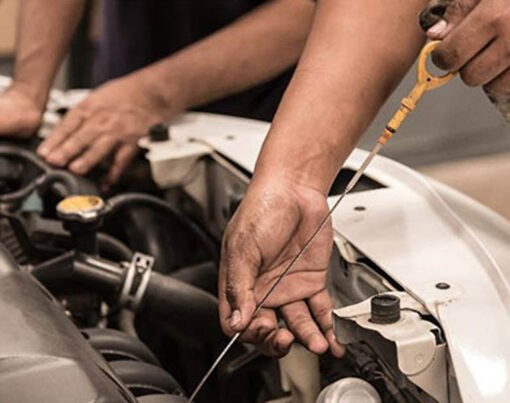Becoming a licensed driver is a significant milestone for the youth, marking a rite of passage that is anticipated with both excitement and apprehension. The open road represents a world of freedom, independence, and endless possibilities, yet it’s also fraught with considerable risks that cannot be overlooked. According to a report by the Centers for Disease Control and Prevention, drivers aged 16-19 are nearly three times more likely to be involved in a fatal crash compared to drivers aged 20 and older. Despite these concerning statistics, the progression from a pedestrian to a driver is an inevitable and necessary phase, an intersection where the euphoria of autonomy meets the sobering realities of responsibility.
Safety during this stage demands a balance of awareness, restraint, and diligence. This article offers an insightful narrative that goes beyond the conventional discourse of driving statistics and legal requirements. We seek to educate, inform, and guide these new entrants to the roads, as well as their guardians, ensuring that this transition is not only about maneuvering vehicles but also about crafting responsible, skillful, and aware individuals who are assets to the motoring community and society at large.
Table of Contents
The Challenges
Insurance Costs
Young drivers, especially those in their teens and early twenties, often face higher insurance premiums than older drivers due to their lack of experience and statistically higher risk of accidents. If a young driver needs an SR-22, their insurance rates can increase even more because they’re now seen as an even higher risk. In these situations, a reputable SR22 insurance Arizona company can assist.
Impulsivity and Risk-Taking
Young drivers, particularly teenagers, are characterized by a neurological and psychological profile that is inclined towards impulsivity and risk-taking behaviors. The adolescent brain, still in the stages of development, can sometimes prioritize reward over risk, leading to decisions that jeopardize safety. Understanding this helps in developing interventions to mitigate the associated dangers on the road
Inexperience
New drivers often find themselves in unpredictable situations, their reactions governed more by instinct than by learned behaviors. The absence of experience often translates into an inability to anticipate potential hazards and respond effectively to complex traffic scenarios. These novice motorists, therefore, face an elevated risk of accidents, as their developing skills are yet to be honed through varied and extensive driving exposures.
Legal Restrictions
Various jurisdictions implement legal restrictions for new and young drivers to mitigate the risks associated with their inexperience and impulsivity. These often include limitations on driving hours, the number of passengers allowed, and access to high-speed roads. Awareness and adherence to these restrictions allows for young drivers to safely and slowly adapt to the responsibilities that come with driving.
The Rewards
Independence and Freedom
The ability to drive is often synonymous with stepping into a world of autonomy for young adults. It liberates them from reliance on public transportation or parents, offering the flexibility to traverse the city at their will. This newfound freedom not only expands their physical horizons but also contributes to personal development, instilling a sense of independence.
Job Opportunities
A driver’s license can significantly broaden the spectrum of employment opportunities available to young people. Being able to drive is often a prerequisite for various roles, from delivery jobs to field work assignments. For many youths, acquiring a license is a strategic move that aligns with their career aspirations, opening doors to financial independence and professional growth.
Development of Responsibility
The privilege of driving brings with it responsibilities – towards self, passengers, and other road users. Young drivers learn to juggle the technical aspects of driving with the ethical considerations of being on the road. This initiation into the driving community can foster a heightened sense of accountability, motivating them towards becoming responsible adults.
Tips for Young Drivers
Educational Programs
Enrollment in educational programs is a good first step for aspiring young drivers. These programs are meticulously designed to impart necessary knowledge and skills, ranging from traffic rules to emergency responses. A combination of theoretical knowledge and practical experience ensures that young drivers are well-equipped to drive with confidence and safety.
Parental Guidance and Involvement
By setting examples of responsible driving behavior and offering constructive feedback, they contribute significantly to their children’s driving competency. Maintaining open communication lines and being involved in the learning process can lead to the cultivation of safe and responsible young drivers.
Technology Aids
In the digital age, technology has emerged as a potent ally in enhancing driving safety. Innovative tools and applications, such as driving simulators, GPS, and apps designed to monitor and improve driving habits, are invaluable resources. For young drivers, these technological aids can supplement their learning process, offering real-time feedback and data to refine their skills and bolster safety on the road.
Policy and Regulation Enhancements
Enhancements in policy and regulations can substantially impact young driver safety. Implementing stricter laws ensures that young drivers are well-prepared and responsible on the road. Concurrently, insurance companies can offer discounts to young drivers who exhibit safe driving behaviors, thus incentivizing caution and skillful driving.
Through combined efforts of educational programs, parental involvement, technological aids, and enhanced policies, a supportive ecosystem can be established. This not only mitigates the inherent risks but also amplifies the rewards, molding informed, skilled, and conscientious young drivers ready to embrace the open road with confidence and caution.










